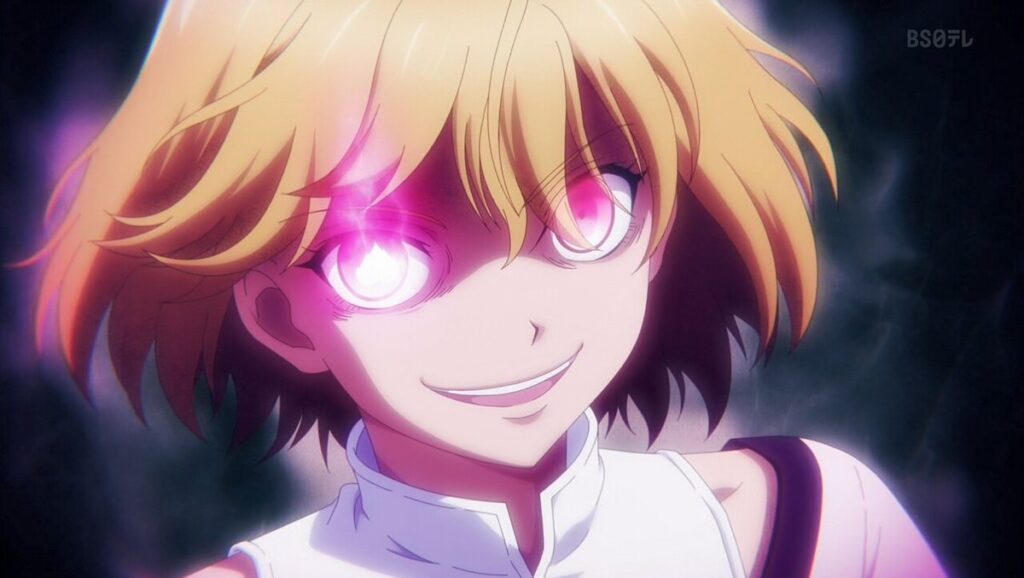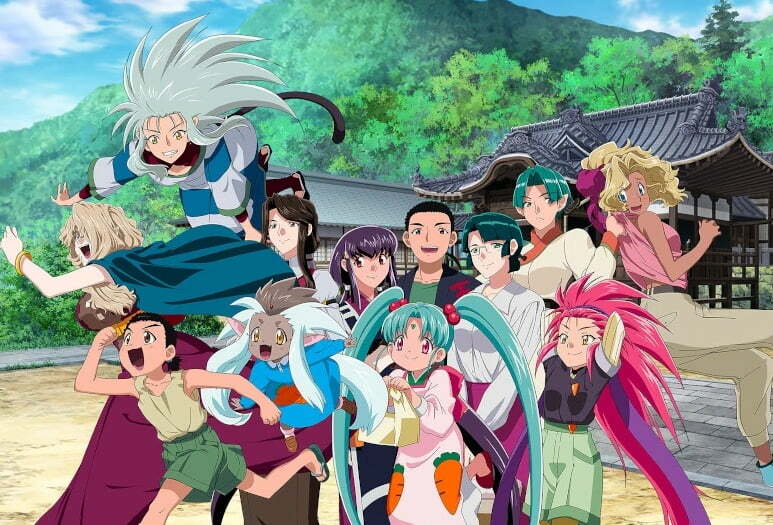The Peach Boy Riverside anime was one of those fantasy anime series that you watch, enjoy, and forget about, generally just kind of knowing it probably won’t be wildly popular enough to get a second season – or rather, it should have been one of those anime series.
The Peach Boy Riverside anime told a pretty decent story about a world where humans, demihumans, and ogres live – often unhappily – with each other. It follows the journey of a princess named Sally who learns that she has the ability to counter the devastating might of the oni. While she believes that humans, demihumans, and oni can eventually live in peace, she is searching for a man named Mikoto who has a power like hers, but a self-proclaimed mission to kill every last oni – painfully.
The most notable treat provided in the series was the distinct sense of psychopathy whenever characters use this oni-slaying power. It is the kind of vicious intensity that you don’t often get to see in main characters, much less female ones.
However, the overall okayness of the plot of Peach Boy Riverside is ruined by its decision to tell the story in a non-linear way.
Peach Boy Riverside Watch Order
Why Was Peach Boy Riverside Told Non-Linearly?
An anime following main character on a journey with no destination is a valid plot for non-linear storytelling in anime. For example, if you took any of the arcs of Kino’s Journey and shifted them around from the already non-linear order they are in, it would still work just fine.
However, Peach Boy Riverside isn’t the same kind of ponderous meditation on ethics, mortality, and philosophy that Kino’s Journey is, now is it? It is a fantasy tale that occasionally rapidly switches from upbeat to joyous slaughter.
The director of Peach Boy Riverside, Shigeru Ueda, gave some insight as why he chose such a now-controversial non-linear broadcast order for the episodes in an interview. He cites that because the Peach Boy Riverside manga was still ongoing, to air the story linearly would be to end the anime right in the middle of it. So they reorganized events that gave the anime a stronger ending.
Considering the amount of single-season anime started before the end of the source material that already exsist, this seems a bit of a misstep on his part.
What is Peach Boy Riverside’s Broadcast Watch Order?
On most streaming services, you will still find Peach Boy Riverside aired in broadcast order, though to watch the anime series in this order is not recommended, even if it is easier.
Peach Boy Riverside Broadcast Order
- 1 – “The Ex-Princess and the Harefolk.”
- 2 – “Ogres and Humans.”
- 3 – “Sally and a Crossroads.”
- 4 – “The Princess and the Peach.”
- 5 – “Frau and the Vampire.”
- 6 – “Carrot and Millia.”
- 7 – “Species and Belonging.”
- 8 – “Companion and Companion.”
- 9 – “Mikoto and Mikoto.”
- 10 – “Horror and Resentment.”
- 11 – “Ideals and Reality.”
- 12 – “Resolutions and Goodbyes.”
If you want to watch the series in this order, that is perfectly fine. However, it will require you to pay more attention to the events than your standard shouen-esque fantasy anime.
What is the Recommended Chronological Watch Order of Peach Boy Riverside?
While it is distinctly more annoying to have to pick out specific episodes, it does provide a better viewing experience, and a more cohesive story for Peach Boy Riverside.
If you are looking to get into the manga after the anime, do be aware that the anime paints Sally as more of a main character than the manga does, which splits focus more between Sally and Mikoto.
Chronological Peach Boy Riverside Watch Order
- 4 – “The Princess and the Peach.”
- 1 – “The Ex-Princess and the Harefolk.”
- 2 – “Ogres and Humans.”
- 7 – “Species and Belonging.”
- 11 – “Ideals and Reality.”
- 12 – “Resolutions and Goodbyes.”
- 5 – “Frau and the Vampire.”
- 6 – “Carrot and Millia.”
- 3 – “Sally and a Crossroads.”
- 8 – “Companion and Companion.”
- 10 – “Horror and Resentment.”
- 9 – “Mikoto and Mikoto.”
This is, unfortunately, a lot of jumping around. However, this is the Peach Boy Riverside watch order that will make the most sense.



